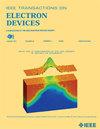基于迁移学习的新一代节点3-D NAND闪存电特性快速准确预测
IF 2.9
2区 工程技术
Q2 ENGINEERING, ELECTRICAL & ELECTRONIC
引用次数: 0
摘要
利用有限数据的迁移学习预测了用于下一代节点开发的缩放三维nand单元的电特性。nand单元结构参数被认为是输入,输出包括关键的电特性,如单元${V}_{t}$、${V}_{t}$初始状态和编程状态之间的差值($\Delta {V}_{t}$)、亚阈值摆幅(SS)和通流(${I}_{\text {ON}}$)。一个多层感知器(MLP)模型包含四个隐藏层,专注于具有2000个数据点的大型nand细胞(25nm门长),作为预训练模型。迁移模型利用预先训练的知识,在没有权重和偏置训练的情况下,用500个数据点预测较小电池(栅极长度为19 nm)的电特性。对测试数据的评价具有显著的准确性,均值和标准差均低于3%,证明了该模型在数据有限情况下的有效性。此外,通过将模型的性能与数据集大小的变化和迁移学习的存在进行比较,进行了综合评估,突出了迁移学习的有效性和优势。迁移学习可以为工程师提供下一个节点的详细结构信息,加快设备的开发,从而节省大量的时间和成本。本文章由计算机程序翻译,如有差异,请以英文原文为准。
Fast and Accurate Prediction of Electrical Characteristics of Next-Generation Node 3-D NAND Flash Memory Using Transfer Learning
Electrical characteristics of scaled 3-D nand cells for next-generation node development were predicted using transfer learning with limited data. The nand cell structure parameters were considered as the inputs, and outputs included key electrical characteristics, such as cell ${V}_{t}$ , the difference in ${V}_{t}$ between the initial and programming states ( $\Delta {V}_{t}$ ), subthreshold swing (SS), and on-current ( ${I}_{\text {ON}}$ ). A multilayer perceptron (MLP) model comprising four hidden layers and focusing on large nand cells (25 nm gate length) with 2000 data points served as a pre-trained model. The transfer model leveraged pre-trained knowledge to predict the electrical characteristics of smaller cells (19 nm gate length) with 500 data points without weight and bias training. Evaluation of test data exhibited remarkable accuracy with both the mean and standard deviation below 3%, proving the model’s effectiveness despite limited data. In addition, a comprehensive evaluation was conducted by comparing the performance of the model with variations in the dataset size and the presence of transfer learning, highlighting the effectiveness and advantages of transfer learning. Transfer learning could provide detailed structure information of the next node for engineers and expedite device development, resulting in significant time and cost savings.
求助全文
通过发布文献求助,成功后即可免费获取论文全文。
去求助
来源期刊

IEEE Transactions on Electron Devices
工程技术-工程:电子与电气
CiteScore
5.80
自引率
16.10%
发文量
937
审稿时长
3.8 months
期刊介绍:
IEEE Transactions on Electron Devices publishes original and significant contributions relating to the theory, modeling, design, performance and reliability of electron and ion integrated circuit devices and interconnects, involving insulators, metals, organic materials, micro-plasmas, semiconductors, quantum-effect structures, vacuum devices, and emerging materials with applications in bioelectronics, biomedical electronics, computation, communications, displays, microelectromechanics, imaging, micro-actuators, nanoelectronics, optoelectronics, photovoltaics, power ICs and micro-sensors. Tutorial and review papers on these subjects are also published and occasional special issues appear to present a collection of papers which treat particular areas in more depth and breadth.
 求助内容:
求助内容: 应助结果提醒方式:
应助结果提醒方式:


